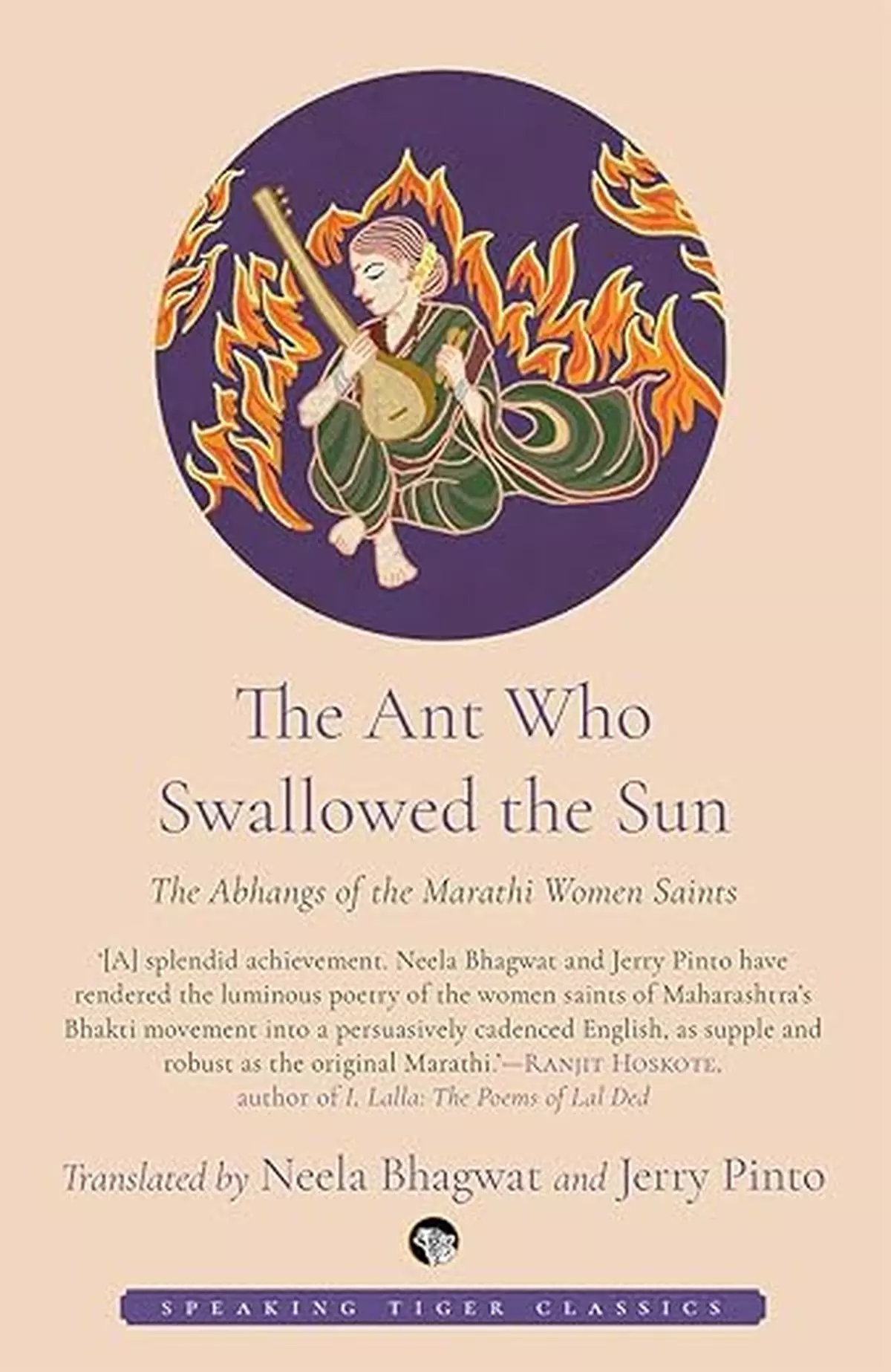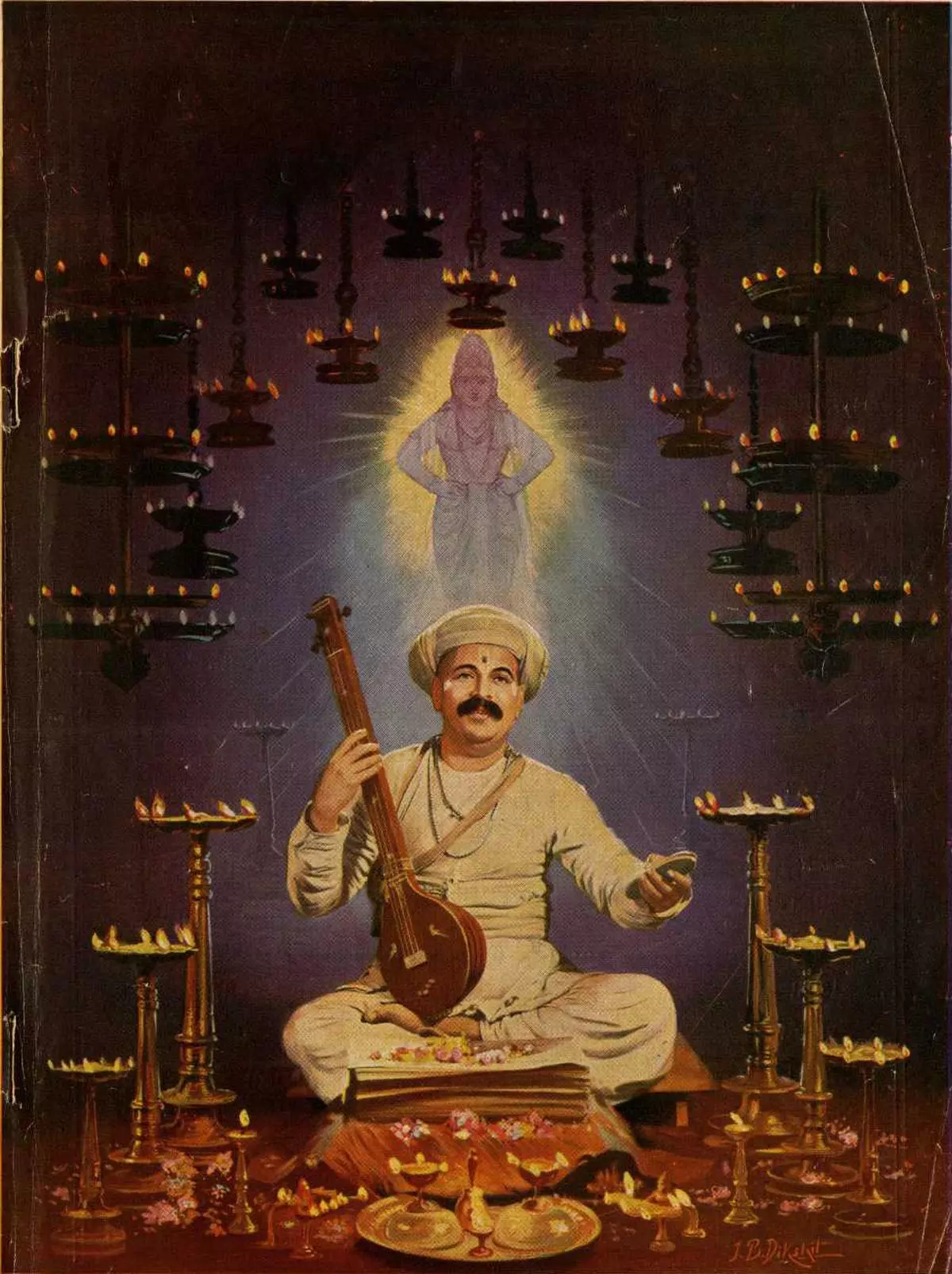It is hard to find a form of writing that Jerry Pinto does not revel in. He started as a poet. His 2006 biography of the Bollywood dancing star Helen (Helen: The Life and Times of A Bollywood H-Bomb) changed that. These light-hearted literary avatars were pushed aside by the tender and courageous novel Em and the Big Hoom (2012). On its heels came Cobalt Blue (2013), a musical, Marathi-inflected translation of Sachin Kundalkar’s novel. Murder in Mahim, a murder mystery-cum-inquiry into homophobia that is now a major JioCinema series, came in 2017, again upsetting critics busy with literary slotting.
In between, Pinto has translated significant Marathi Dalit literature, edited anthologies, and picked up translating from Hindi, bringing in 2021 Swadesh Deepak’s memoir, Maine Mandu Nahin Dekha, into English as I Have Not Seen Mandu. In 2022, his endearing coming-of-age novel, The Education of Yuri, won hearts.
Why should a poet-translator not also translate poetry? In collaboration with Neela Bhagwat, he brought out the translation of the abhangs (a form of devotional poetry in praise of Vitthal or Vithoba) of Marathi women saints as The Ant Who Swallowed the Sun (2019). His collaborative translations of Tukaram’s abhangs with Shanta Gokhale, Behold! The Word is God (2023), features the transliterated abhangs in two versions, one by Shanta Gokhale and the other by Pinto. These readings of the abhangs bring out the spirit of bhakti poetry—a constant questioning of fixities, including caste, class, and patriarchy, embedded in the poets’ love for the divine—that makes it relevant across time and religion.

The Ant Who Swallowed the Sun is Pinto’s translation of the abhangs of Marathi women saint-poets.
| Photo Credit:
By Special Arrangement
A charismatic communicator, Pinto is, above all, a much-loved teacher. At SCMSophia, Mumbai, and through countless peripatetic lectures, he gives his students something that cannot be purchased in these late consumer-capitalistic times: the courage to fail that is the other side of joy.
Pinto talks to Frontline here on the pull of bhakti poetry and why it needs many translations. Edited excerpts:
You are a poet-novelist-multilingual translator. Why do you keep flitting from genre to genre, sipping and soaring as a poet-novelist one moment, and chaining yourself to the rack of translation in the next? What is behind this ceaseless literary adventurism?
When I was a young man, I would say, “I chose language as a means of self-expression.” That was the hubris of youth, a way of suggesting there were others I could have chosen. I didn’t. But I was aware that there were stories I wanted to tell, my own, and also the ones I heard, the ones I overheard, the ones I imagined, which were woven out of strands of all the above.
The good thing about language is that it is limited only by how much time you give it and how much attention you bring to it. So, really, it does not feel like I am doing different things when I am writing a poem or a story or a novel or an essay; this is the same me dealing with the challenges of getting the noumenon of the idea into the shape or form of words. Translating requires the same effort, but it also demands I leave my ego at the door, and that is a difficult task, far more than anything else one has to do. To give primacy to another voice, to find space inside your own, within which you let another speak… sometimes I wonder why anyone dares.
Also Read | Can poetry survive translation?
Some version of the Sapir-Whorf hypothesis—that a fundamental incommunicability exists across cultures and languages, negotiating which is both impossible and ill-advised—is often hurled at translators. More so, at translators of medieval poetry. Why do you think medieval poetry demands translation into English/Englishes?
It is most certainly ill-advised and it is all but impossible. The thing about those of us who want to translate across time and gender, adding to language and culture, is that we are foolhardy and we are possessed. When you hear Kiti he marti, kiti he radti [How much death, how much weeping], you think, “I wish more people could know this. I want more people to know this.” And before you know it, you are trying to translate a line in your head. That becomes the line that leads you into the labyrinth, and you have nothing to guide you but your heart and your spirit. You know you will fail. As you follow the line, it gets thinner and thinner. You are losing so much. You are failing, and then suddenly there’s a faint glow and you’re at the heart of a poem. It’s a rare experience, but when it happens, it become something you want to do again and again.
So, yes, it is foolhardy, but who cares? Yes, it is ill-advised, but when I look at my shelves and think of Rumi and Andal and Basavanna and Meerabai, and I think of the bravehearts who ignored the advice and went on, plunging into the dark heart of bhakti, I think: I am proud to be of that tribe, however small and unimportant a member.
The “original text” is seen as some sort of ideal text, with an autonomous, sacrosanct existence against which the effectiveness of the translation is measured. By this lens, a translation cannot but err, either on the side of the original’s meaning or its rhythm. Do you think that the yardstick of “original” can be legitimately applied to bhakti poetry, itself a product of an oral tradition, coming to us on a ceaselessly flowing 500-year-old river of interpretation?
The “original text” is very important to me. It is my North Star; I will never get there, but I will be guided by its light. I know that the light I see left the star long ago; I am bathing in a memory, but it is a great and lovely bath. The light will pour on past me and into the future. There it will appear different even if the words are the same. This is the glory of the bhakti tradition because it peels you away from you and speaks to something you once had easy access to but which you covered up with layers of pretence. Welcome to nudity.
And so, you are quite right to question the validity of the original while remembering that it is a hologram, cast from a million respectful versions, a billion reverential prayers.
“The bhakti poets are modern and medieval at the same time and we must allow for both. To ask them to be who we want them to be without letting them be who they were is to do a disservice to them and to ourselves.”
Bhakti poetry is sound-based, meant to flow from ear to ear, and performance-oriented. What do you translate when you translate such poetry? The line, the sound, the metre? Should one render it in the language of the times back then or in the language of right now? Should verse be rendered as verse or as prose? What is added, what is omitted? How does one decide?
There are times when you know where you are going because you have a sense of the poem. There are other times when you are blind. What led you to the poem is its mutability, its subtlety, its multivalence. Now you must settle these issues to allow English to seep in. How do you do that? You start by saying: this is what I will do. You end by saying: this is what I can do.

The 1936 Marathi film Sant Tukaram, was based on the life of the 17th century saint-poet.
| Photo Credit:
Wiki Commons
Given the subjectivity of the process and the fluidity of not just the source text but also of time, of words themselves, what do you think a translation brings to a modern reader of medieval poetry?
I think the first thing that we are in awe of is the intimacy of the saint and the godhead. How closely intertwined they are, how familiar. God belches over Janabai. Tukaram mounts a spirited attack on Vitthal. Kanhopatra prostrates herself. Bahinabai seems often not to want to look past Tukaram. You envy this, you envy their certainties.
But you are also wary because the epiphanies are many and glorious, but then comes the long dark night of the soul when there is no answer to the cry that goes out from the heart. If you have never known god, it might not matter. But to know god and then to be deprived is torment, and their cries echo in our ears and terrify us. They remind us that bhakti is a matter of fire and blood, and fire in the blood, and the blood on fire, and is not to be taken lightly. They signpost it clearly. They warn you; this is not for the faint-hearted and, we are, most of us, faint-hearted. I know I am.
Then there is their “modernity”. I put that in inverted commas because these are ancient voices and the fact that they are still around means that they meant something at each point in time from the first issuance to the moment we are hearing them, and each time, the listener thought, “Ah, she speaks to me, he has voiced my problems and my concerns, yes, I feel this way, she could well belong to my age.” So they are modern and they are medieval at the same time, and we must allow for both. To ask them to be who we want them to be without letting them be who they were is to do a disservice to them and to ourselves.
I think of Soyarabai [a 14th century Dalit saint] and Muktabai as my friends. I would like to sit down and have a conversation with them, and then suddenly I read a line that is speaking to me and I am again delighted by the possibility of conversations that keep happening without bodies and with words. You just have to keep listening; they will get through.

Andal was the only female bhakti poet among the 12 poet-saints of south India. A scene from the performance of Naachiyar, a dance-drama on her life, at Bharatiya Vidhya Bhavan in Chennai in 2022.
| Photo Credit:
RAGHUNATHAN SR
How do your translation and writing practices nurture each other?
I recently read a book that suggested that language arose out of play, and play suggests a lack of planning that suddenly emerges into a form. You do not set out to do one to nurture the other. They do, but in unexpected and interesting ways that you can only see in retrospect.
Also Read | In Tukaram’s earthly paradise
Please tell us about your next book.
The next book will be a translation of Farid Khan’s Hindi memoir, Apnon Ke Beech Mein Ajnabi, titled Stranger in My Own Land. Published by LeftWord, it will be out by the end of this year or early next year.
Varsha Tiwary is a Delhi-based writer and translator. She recently published 1990, Aramganj, a translation of the bestselling Hindi novel Rambhakt Rangbaz.
